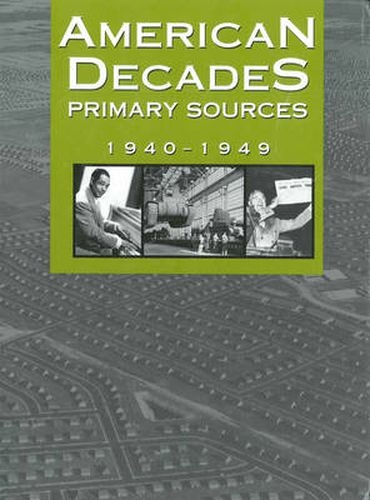Readings Newsletter
Become a Readings Member to make your shopping experience even easier.
Sign in or sign up for free!
You’re not far away from qualifying for FREE standard shipping within Australia
You’ve qualified for FREE standard shipping within Australia
The cart is loading…






The United States of the 1940s marked the beginnings of significant social and political change. Men were shipped off to fight in World War II, and women entered the workforce in larger numbers than ever before to hold down the homefront, earning a taste of what it meant to be independent. African Americans fought beside their white counterparts in the war and returned home unwilling to accept the inequality under which theyd lived for so long. The United States ushered in the nuclear age with the atomic bombings of Hiroshima and Nagasaki, but also solidified its role as an international leader by helping to rebuild Europe and Japan under the Marshall Plan. The Soviet Union –once an ally – became a feared enemy, and Americans looked for communists in their midst while the U.S. government shifted its policies from world war to Cold War. But while the government prepared to fight the communists, the public enjoyed the offerings of the first supermarkets.
The following documents are just a sampling of the offerings available in this volume:
The Life of John Brown, No. 17, painting by Jacob Lawrence Linus Paulings research notebooks Photographs of supermarkets in the 1940s World War II editorial cartoons by Dr. Seuss
Richard Wrights Blues, review of Wrights novel, Black Boy, by Ralph Ellison Farewell to Manzanar and A Teacher at Topaz memoirs of teachers in Japanese-American internment
$9.00 standard shipping within Australia
FREE standard shipping within Australia for orders over $100.00
Express & International shipping calculated at checkout
The United States of the 1940s marked the beginnings of significant social and political change. Men were shipped off to fight in World War II, and women entered the workforce in larger numbers than ever before to hold down the homefront, earning a taste of what it meant to be independent. African Americans fought beside their white counterparts in the war and returned home unwilling to accept the inequality under which theyd lived for so long. The United States ushered in the nuclear age with the atomic bombings of Hiroshima and Nagasaki, but also solidified its role as an international leader by helping to rebuild Europe and Japan under the Marshall Plan. The Soviet Union –once an ally – became a feared enemy, and Americans looked for communists in their midst while the U.S. government shifted its policies from world war to Cold War. But while the government prepared to fight the communists, the public enjoyed the offerings of the first supermarkets.
The following documents are just a sampling of the offerings available in this volume:
The Life of John Brown, No. 17, painting by Jacob Lawrence Linus Paulings research notebooks Photographs of supermarkets in the 1940s World War II editorial cartoons by Dr. Seuss
Richard Wrights Blues, review of Wrights novel, Black Boy, by Ralph Ellison Farewell to Manzanar and A Teacher at Topaz memoirs of teachers in Japanese-American internment